The Dangers of Electronic Waste and How to Dispose of It Safely
In our fast-paced, tech-driven world, electronic devices have become indispensable. From smartphones to laptops, we rely on these gadgets daily. However, when they reach the end of their life cycle, they transform into a significant environmental challenge known as electronic waste, or e-waste. This article explores the risks associated with e-waste, its environmental impact, and provides guidance on safe disposal methods to mitigate these dangers for a healthier planet.
E-waste encompasses discarded electronic devices that are no longer wanted, functional, or useful. This includes a wide range of products such as old computers, televisions, mobile phones, and even household appliances. Understanding its definition and components is crucial for recognizing the importance of proper disposal and the potential risks involved. Many of these devices contain hazardous materials like lead, cadmium, and brominated flame retardants, which can pose serious threats to both our health and the environment if not disposed of correctly.
The accumulation of e-waste poses significant threats to ecosystems. When electronic devices are improperly discarded, they can leak toxic substances into the soil and water, leading to contamination. For instance, when a device is dumped in a landfill, the hazardous materials can seep into the ground, affecting not only the local flora and fauna but also potentially entering the food chain. This contamination can result in long-term environmental damage and disrupt entire ecosystems.
Exposure to hazardous materials in e-waste can lead to serious health issues. Individuals who work in e-waste recycling centers or live near landfills are particularly at risk. The potential health risks include respiratory problems, skin conditions, and even neurological damage. The chemicals released from e-waste can affect various bodily systems, creating a range of health complications that can persist over time.
Heavy metals like lead and mercury found in e-waste are particularly concerning. These metals can leach into the environment, posing significant dangers to human health. Lead exposure, for instance, can result in cognitive impairments, while mercury can affect the nervous system. The long-term effects of exposure to these metals can lead to chronic health issues, making it essential to handle e-waste with care.
Many electronics contain flame retardants designed to prevent fires. However, these chemicals can be harmful when released into the environment. When e-waste is incinerated or left to decompose in landfills, these flame retardants can leach into the soil and water, causing significant risks to both the environment and human health. Research has linked some of these chemicals to endocrine disruption and other serious health issues, underscoring the importance of proper disposal methods.
Choosing between recycling and landfilling e-waste is crucial for sustainability. Recycling e-waste helps recover valuable materials and reduces the need for new raw materials, which in turn lessens the environmental impact. On the other hand, landfilling e-waste can lead to toxic leachate, which contaminates soil and groundwater. The comparison between these two methods highlights the importance of making informed decisions about e-waste disposal. Below is a summary of the benefits of recycling versus the consequences of landfilling:
| Recycling | Landfilling |
|---|---|
| Recovers valuable materials | Contributes to soil and water contamination |
| Reduces environmental impact | Increases landfill waste |
| Promotes sustainable practices | Leads to health risks for nearby communities |
Proper disposal methods are essential to minimize the dangers of e-waste. There are several effective ways to dispose of electronic devices safely and responsibly. One of the best options is to participate in local e-waste recycling programs. Many communities offer these programs, making it easier for residents to dispose of their electronic waste without harming the environment.
Finding and utilizing local e-waste recycling programs is straightforward. Many municipalities have designated drop-off locations or scheduled collection days for electronic waste. You can check your local government's website or contact them directly to find out more about available programs. Participating in these initiatives not only helps you dispose of your devices responsibly but also contributes to a larger effort to protect the environment.
For those who prefer a hands-on approach, there are practical tips for safely dismantling and disposing of electronic devices at home. Here are some key points to consider:
- Always wear protective gear such as gloves and goggles when handling e-waste.
- Research how to safely dismantle devices to separate hazardous components.
- Store hazardous materials in a safe container until you can dispose of them properly.
- Never throw e-waste in regular trash; always seek out recycling options.
What is e-waste? E-waste refers to discarded electronic devices that are no longer functional or wanted, such as old computers, phones, and televisions.
Why is e-waste dangerous? E-waste contains hazardous materials that can leach into the environment, posing risks to both ecosystems and human health.
How can I recycle e-waste? Check for local e-waste recycling programs in your community, which often have designated drop-off locations or collection events.
What should I do with hazardous components? Always store hazardous materials safely and seek out specialized disposal options for these components.
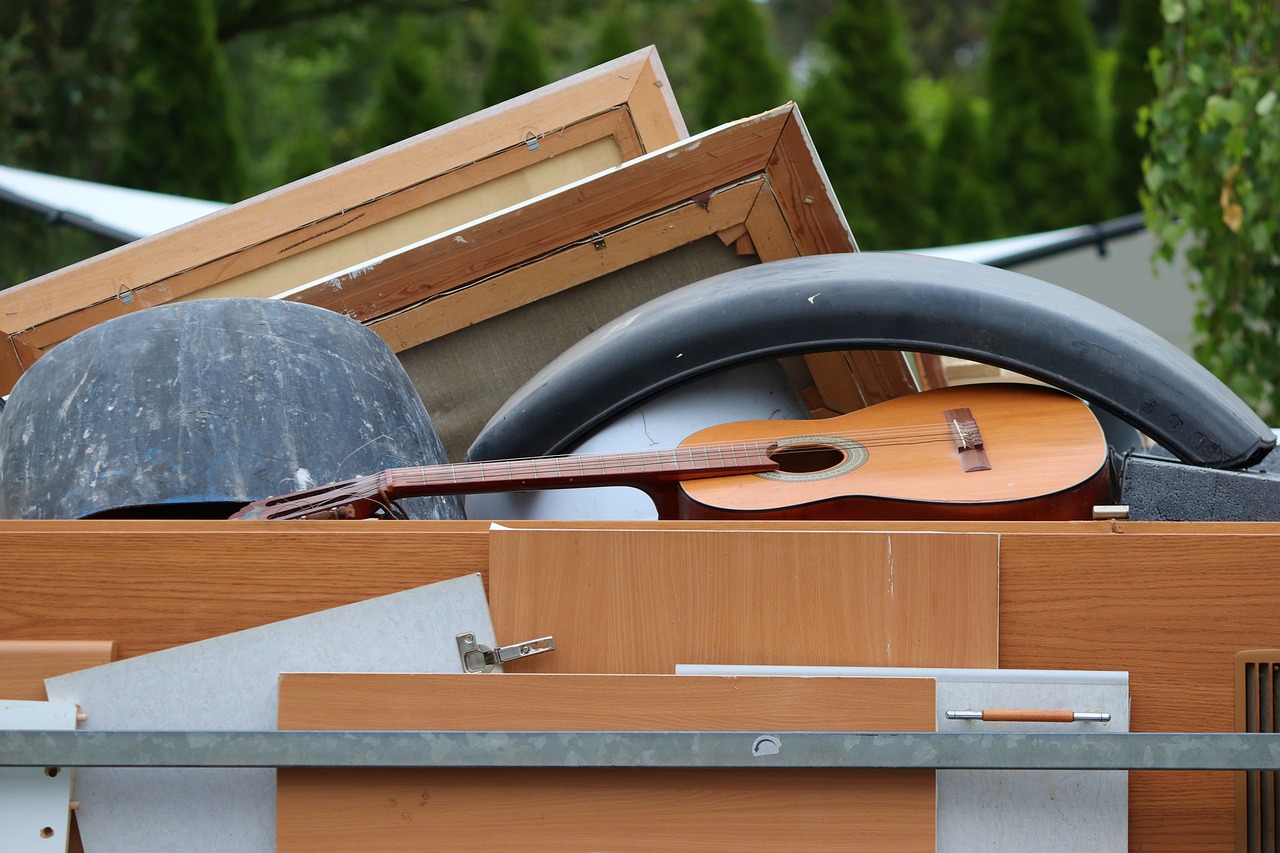
Understanding Electronic Waste
Electronic waste, commonly referred to as e-waste, includes a wide range of discarded electronic devices that have reached the end of their useful life. This category encompasses everything from old smartphones and laptops to televisions and kitchen appliances. It's essential to grasp the definition of e-waste and its components to understand why proper disposal is so crucial. Many of these devices contain hazardous materials that can have dire consequences for both the environment and human health if not disposed of correctly.
The rapid advancement of technology means that electronic devices are becoming obsolete faster than ever. In fact, the United Nations estimates that the world generated about 53.6 million metric tons of e-waste in 2019, a number that is expected to rise significantly in the coming years. This staggering amount highlights the urgency of addressing e-waste disposal. When we think about e-waste, we often picture the devices themselves, but it's equally important to consider the materials they contain. Here’s a quick breakdown of common components found in e-waste:
| Component | Hazardous Material | Potential Risks |
|---|---|---|
| Smartphones | Lead, Cadmium | Neurological damage, Kidney damage |
| Computers | Mercury, Beryllium | Respiratory issues, Cancer |
| Televisions | Phosphors, PVC | Reproductive issues, Endocrine disruption |
Understanding the components of e-waste is crucial because it helps us recognize the importance of responsible disposal methods. When these devices are simply thrown away, they often end up in landfills, where the hazardous materials can leach into the soil and water supply. This not only poses a threat to local wildlife but can also have serious implications for human health. Imagine a community where toxic substances seep into the groundwater—it's a nightmare scenario that we can prevent with proper e-waste management.
Moreover, e-waste is not just a local issue; it’s a global challenge. Many developed countries export their e-waste to developing nations, where it is often processed in unsafe conditions. This practice exacerbates the problem, as workers in these countries may be exposed to harmful chemicals without adequate protection. The cycle of e-waste is a reminder that our technological conveniences come with responsibilities. So, the next time you upgrade your smartphone or replace your laptop, think about where that old device will end up. Understanding e-waste is the first step towards making informed choices about its disposal.
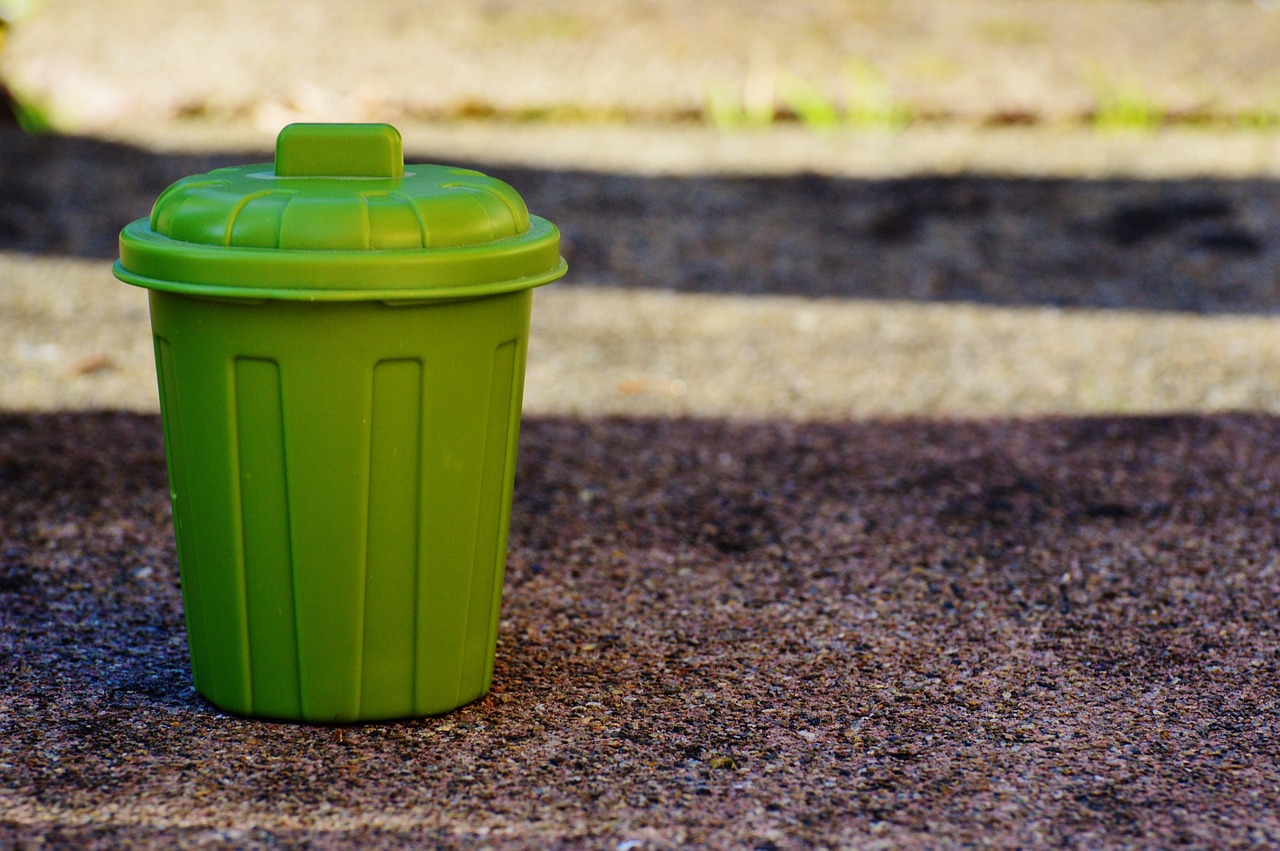
Environmental Impact of E-Waste
Electronic waste, or e-waste, is more than just a pile of discarded gadgets; it’s a ticking time bomb for our environment. When we toss away our old phones, laptops, and other electronic devices, we often overlook the hazardous materials they contain. The accumulation of e-waste has become a significant issue, with millions of tons generated each year. This waste doesn’t just disappear; it can leach toxic substances into our soil and water systems, creating a ripple effect that impacts ecosystems and human health alike.
One of the primary concerns with e-waste is the contamination of soil and water. When electronic devices are improperly disposed of, harmful chemicals such as lead, cadmium, and mercury can seep into the ground. This contamination can lead to devastating consequences for local wildlife and plants, disrupting the delicate balance of our ecosystems. Imagine a vibrant forest where the soil is rich and teeming with life; now picture that same forest, poisoned by the remnants of our discarded technology. It’s a stark contrast that highlights the urgency of addressing e-waste.
Moreover, the impact of e-waste extends beyond just environmental degradation. It poses a serious threat to human health. As these hazardous materials infiltrate our water supply, they can enter our bodies through drinking water and food sources, leading to a myriad of health issues. The long-term effects can be devastating, particularly for vulnerable populations such as children and pregnant women. The cycle of pollution and health risks creates a vicious loop that we must break.
To truly grasp the scale of this issue, consider the following statistics:
| Year | Global E-Waste Generated (in million metric tons) |
|---|---|
| 2014 | 41.8 |
| 2016 | 44.7 |
| 2018 | 50.0 |
| 2020 | 53.6 |
This table illustrates the alarming increase in e-waste production over just a few years. Each year, we are generating more and more electronic waste, which means the potential for environmental damage and health risks is also rising.
In addition to heavy metals, many electronics contain flame retardants and other toxic chemicals that can be released into the environment. These substances can accumulate in the food chain, affecting not just wildlife but also the humans who consume them. It’s a sobering thought that the very technology we rely on could be poisoning our planet.
In conclusion, the environmental impact of e-waste is a pressing issue that cannot be ignored. From soil contamination to health risks, the consequences of improper disposal are far-reaching. It’s crucial for individuals, communities, and governments to work together to find sustainable solutions for e-waste management. By being proactive about recycling and proper disposal, we can mitigate these dangers and protect our planet for future generations.
- What is e-waste? E-waste refers to discarded electronic devices that are no longer in use, such as computers, phones, and televisions.
- Why is e-waste a problem? E-waste contains hazardous materials that can contaminate the environment and pose health risks to humans and wildlife.
- How can I dispose of e-waste safely? You can dispose of e-waste safely by utilizing local recycling programs or following DIY disposal tips for hazardous components.
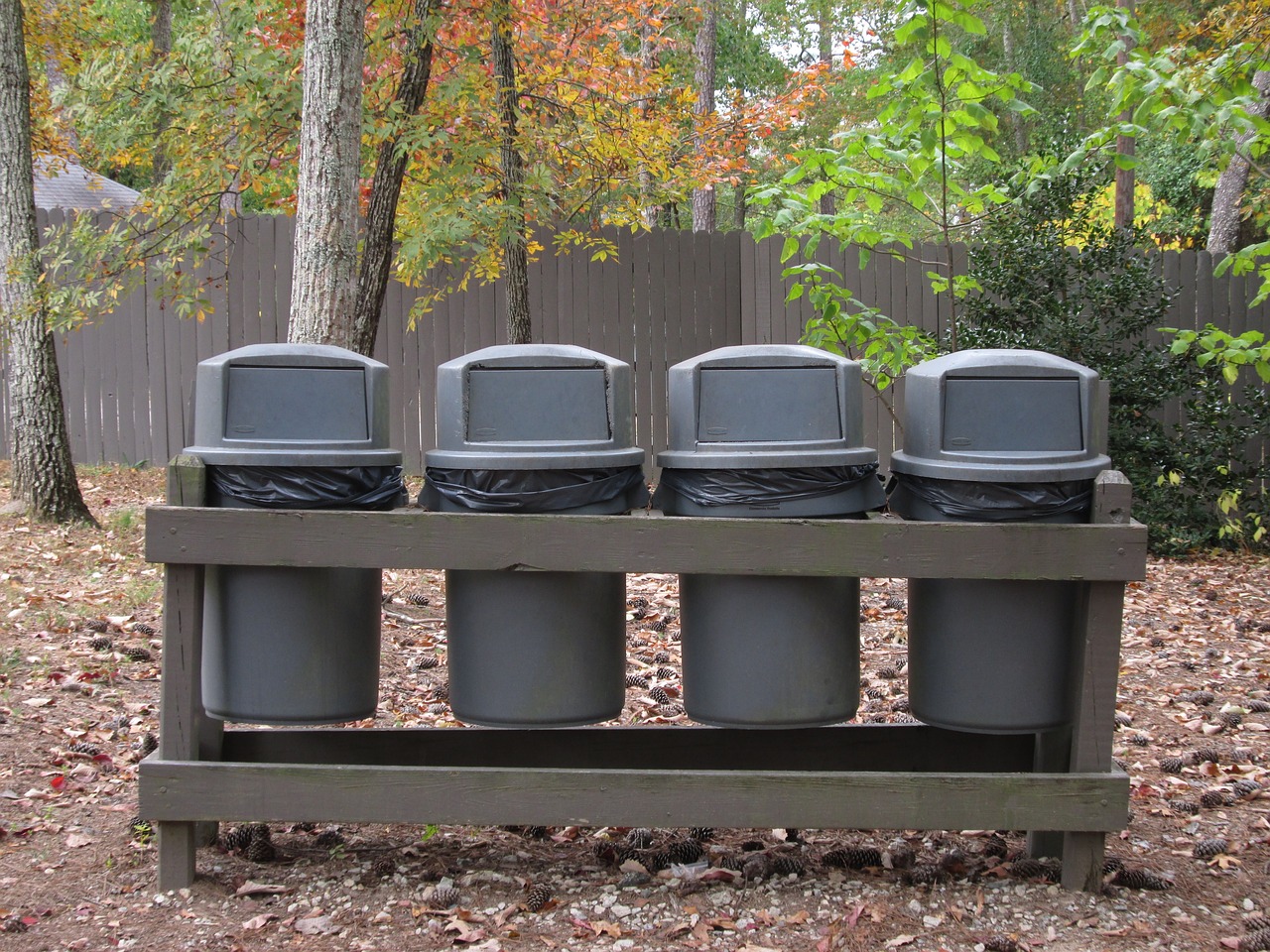
Health Risks from E-Waste
When we talk about electronic waste, or e-waste, it’s not just a pile of discarded gadgets collecting dust in our basements; it’s a ticking time bomb of health risks waiting to explode. The hazardous materials lurking in old smartphones, laptops, and televisions can wreak havoc on our bodies. Imagine opening your favorite old device only to find a cocktail of toxic substances that could potentially harm you and your loved ones. Scary, right? Let’s dive into the specifics of how e-waste can impact our health.
First and foremost, exposure to hazardous materials found in e-waste can lead to a myriad of serious health issues. These issues aren't just limited to minor annoyances; they can escalate into chronic conditions that affect your quality of life. For instance, heavy metals like lead and mercury, which are commonly found in electronics, can cause respiratory problems, neurological damage, and even developmental issues in children. This is particularly alarming as children are more susceptible to these toxins, affecting their growing bodies and minds.
In addition to heavy metals, flame retardants used in many electronic devices pose another significant health risk. When these chemicals are released into the environment, they can accumulate in our bodies over time, leading to potential endocrine disruption and reproductive issues. The thought of these harmful substances infiltrating our homes and affecting our health is deeply concerning. It’s like inviting a silent enemy into your living room, one that can impact your well-being without you even realizing it.
To better understand the scope of these health risks, let’s take a look at a table summarizing some of the common hazardous materials found in e-waste and their associated health effects:
| Hazardous Material | Health Effects |
|---|---|
| Lead | Neurological damage, developmental issues in children, respiratory problems |
| Mercury | Kidney damage, neurological disorders, impaired cognitive functions |
| Flame Retardants | Endocrine disruption, reproductive issues, potential carcinogenic effects |
As you can see, the health risks associated with e-waste are not to be taken lightly. It’s essential to be aware of these dangers, especially if you’re handling old electronics without proper precautions. So, what can we do to protect ourselves and our environment? The first step is to **understand the risks** and then take action to dispose of e-waste responsibly. Remember, awareness is the first line of defense against these lurking hazards.

Heavy Metals in E-Waste
When we talk about electronic waste, one of the most alarming aspects is the presence of heavy metals. These are not just any ordinary materials; they are toxic substances like lead, mercury, cadmium, and arsenic that can wreak havoc on our environment and health. Imagine this: every time you toss an old phone or a broken laptop in the trash, you’re potentially allowing these dangerous metals to seep into the ground and water, creating a ticking time bomb for ecosystems and human health alike.
To put it into perspective, the electronics we use daily contain these heavy metals in various components. For instance, lead is often found in soldering materials, while mercury can be present in switches and circuit boards. When e-waste is improperly disposed of, these metals have the potential to leach into the soil, leading to contamination of groundwater and nearby ecosystems. This is not just an environmental issue; it’s a public health crisis waiting to unfold.
The long-term effects of exposure to heavy metals are staggering. They can lead to severe health complications, including:
- Neurological damage: Prolonged exposure to lead, for example, can affect brain development in children, leading to learning disabilities and behavioral issues.
- Kidney damage: Cadmium exposure can severely impact kidney function, increasing the risk of kidney disease.
- Respiratory problems: Inhalation of dust containing heavy metals can cause chronic respiratory issues and lung disease.
The reality is that heavy metals in e-waste can persist in the environment for decades, accumulating in the bodies of living organisms. This bioaccumulation poses a risk not only to wildlife but also to humans who consume contaminated food and water. It’s like a silent predator lurking in our landfills, waiting to unleash its toxic effects.
To combat this issue, it’s vital to recognize the importance of proper e-waste disposal and recycling. By diverting electronic devices from landfills and ensuring they are processed through certified recycling programs, we can significantly reduce the risk of heavy metals contaminating our environment. This is not just about protecting nature; it’s about safeguarding our health and the health of future generations.
In conclusion, the dangers posed by heavy metals in e-waste are real and pressing. By understanding these risks and taking proactive measures to dispose of electronics responsibly, we can contribute to a cleaner, safer planet. Remember, every small action counts, and together, we can make a difference.
Q: What are the most common heavy metals found in e-waste?
A: The most common heavy metals include lead, mercury, cadmium, and arsenic, which can have serious health and environmental impacts.
Q: How can I safely dispose of my old electronics?
A: Look for local e-waste recycling programs or certified e-waste recycling centers that can safely handle and recycle your electronics.
Q: What are the health risks associated with heavy metal exposure?
A: Exposure can lead to neurological damage, kidney disease, respiratory problems, and other serious health issues.
Q: Is it legal to throw away electronics in the trash?
A: In many places, it is illegal to dispose of electronics in regular trash due to the hazardous materials they contain. Always check local regulations.
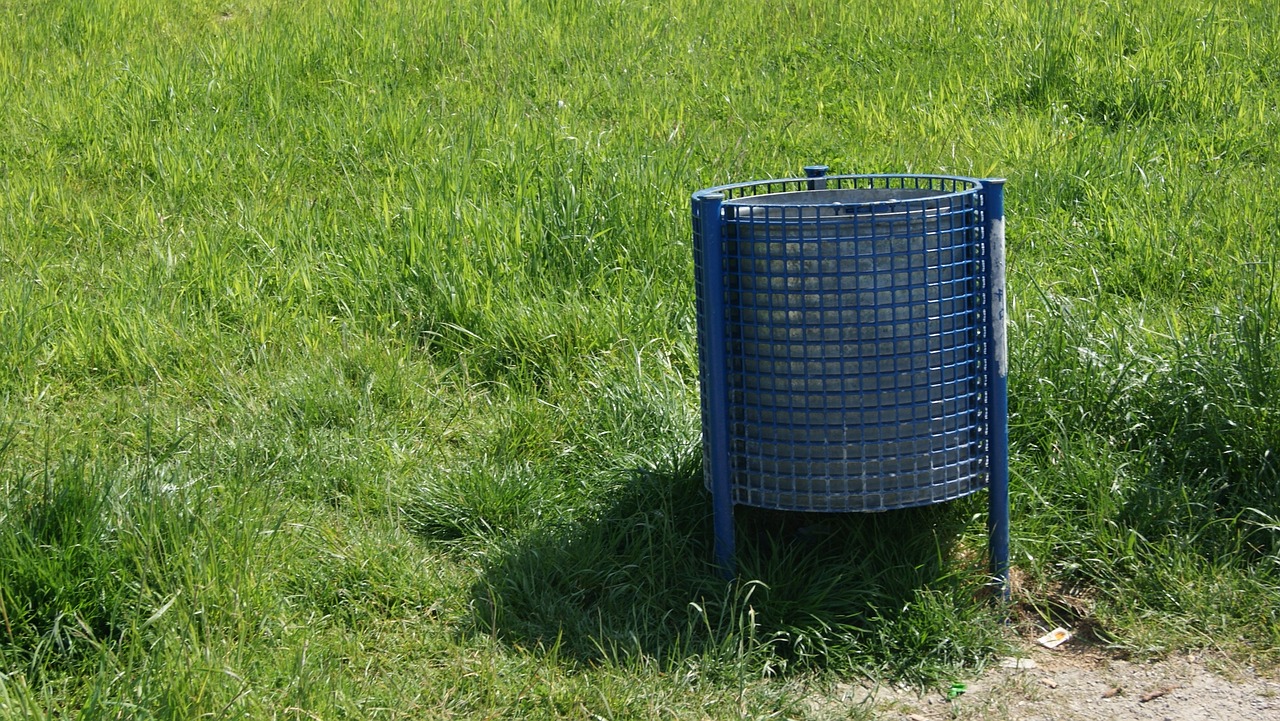
Flame Retardants and Their Dangers
Flame retardants are chemicals added to various electronic devices to reduce the risk of fire. While this may sound beneficial, the reality is that these substances can pose significant dangers to both our health and the environment. Many of these chemicals, such as polybrominated diphenyl ethers (PBDEs), are persistent in the environment and can accumulate in our bodies over time. This accumulation can lead to a range of health issues, making it crucial to understand their effects.
When electronics are improperly disposed of, flame retardants can leach into the soil and water, creating a toxic environment. Imagine a small spark igniting a larger fire; this is similar to how these chemicals can spread their harmful effects once they escape into the ecosystem. They can disrupt endocrine functions, impair neurological development, and even lead to reproductive issues. The irony is that while we aim to protect ourselves from fire hazards, we may be exposing ourselves to even greater risks through these chemicals.
Furthermore, the dangers of flame retardants don't stop at environmental contamination. When electronics are incinerated, these chemicals can release toxic fumes into the air, contributing to air pollution and posing respiratory risks to nearby communities. It’s a vicious cycle that highlights the need for responsible disposal and recycling of electronic devices. The question we must ask ourselves is: are we truly protecting our health by using these flame-retardant chemicals, or are we merely trading one risk for another?
In summary, while flame retardants serve a purpose in fire prevention, their long-term effects on human health and the environment are alarming. Awareness and education about these substances are essential. As consumers, we should advocate for safer alternatives and support policies that promote the responsible disposal of e-waste. By doing so, we can help mitigate the risks associated with flame retardants and contribute to a healthier planet.
- What are flame retardants? Flame retardants are chemicals used in various products, including electronics, to prevent or slow the spread of fire.
- Why are flame retardants dangerous? They can leach into the environment, accumulate in our bodies, and pose serious health risks such as hormonal disruption and neurological damage.
- How can I safely dispose of electronics containing flame retardants? Utilize local e-waste recycling programs or follow DIY disposal tips to ensure safe handling of hazardous components.
- Are there safer alternatives to flame retardants? Yes, there are emerging materials and methods that can reduce fire risks without the harmful effects of traditional flame retardants.

Recycling vs. Landfilling E-Waste
When it comes to disposing of electronic waste, the choice between recycling and landfilling is a critical one that can have lasting effects on our planet. Think about it: every time you toss a broken smartphone or an old computer into the trash, you’re not just making space in your home; you could be contributing to a much bigger problem. Landfilling e-waste is like throwing a ticking time bomb into a landfill, waiting to explode with toxic chemicals that can seep into the ground and contaminate our water supply. On the flip side, recycling e-waste can be a game-changer, turning potential hazards into valuable resources.
Recycling involves breaking down electronic devices to recover valuable materials such as metals, plastics, and glass. These materials can then be repurposed for new products, reducing the need for virgin resources and minimizing the environmental impact. For instance, did you know that recycling one million laptops can save the energy equivalent to the electricity used by 3,500 homes in a year? That’s a staggering statistic that highlights the power of recycling!
On the other hand, when e-waste is sent to landfills, it can lead to a host of environmental issues. The components of electronic devices often contain heavy metals like lead, cadmium, and mercury, which can leach into the soil and water. This not only affects the local ecosystem but can also pose serious health risks to humans and wildlife. The table below illustrates the stark differences between recycling and landfilling e-waste:
| Aspect | Recycling | Landfilling |
|---|---|---|
| Environmental Impact | Reduces pollution, conserves resources | Causes soil and water contamination |
| Resource Recovery | Recovers valuable materials | All materials are lost |
| Health Risks | Minimal if done correctly | High due to toxic leachates |
| Community Benefits | Creates jobs in recycling industry | None; contributes to waste management issues |
It’s clear that recycling is the superior choice, yet many people still choose the easier option of tossing their old electronics into the landfill. This could be due to a lack of awareness or accessibility to recycling programs. However, as responsible consumers, it’s our duty to educate ourselves and make informed decisions. By choosing to recycle, we not only help the environment but also support a sustainable economy.
So, the next time you find yourself with an outdated gadget, remember that your choice matters. Recycling e-waste can lead to a cleaner, healthier planet, while landfilling it only adds to the problem. Make the smart choice for the environment and consider how your actions can contribute to a more sustainable future.
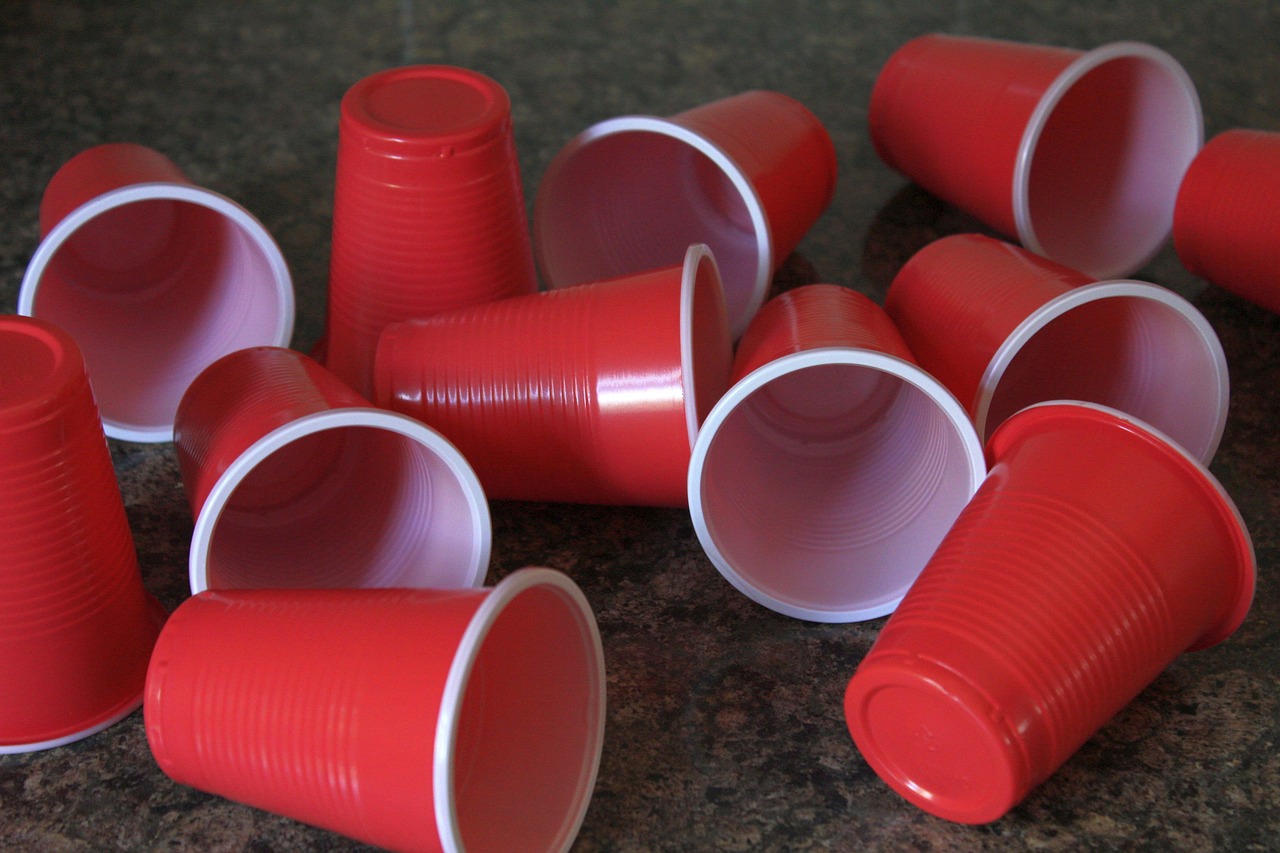
Safe Disposal Methods
When it comes to electronic waste, understanding is not just a good idea; it's essential for protecting our planet and our health. With the rapid pace of technology, we often find ourselves upgrading devices more frequently than we'd like, leading to a mountain of discarded electronics. So, what can we do about it? The answer lies in responsible disposal practices that ensure hazardous materials don’t end up contaminating our environment.
One of the most effective ways to manage e-waste is through recycling. Many communities have established local e-waste recycling programs that provide a safe and environmentally friendly way to dispose of your old electronics. These programs often ensure that hazardous materials are handled by professionals who know how to deal with them safely. To find a recycling program near you, simply check your local government’s website or search online for e-waste recycling centers in your area. You can also look for special events, like e-waste collection days, where you can drop off your old electronics without any hassle.
But what if you prefer a more hands-on approach? If you're the DIY type, there are ways to dismantle and dispose of your electronics safely at home. However, it’s crucial to proceed with caution. First, make sure to wear protective gear, such as gloves and goggles, to shield yourself from any hazardous materials. Next, familiarize yourself with the components of your device. For example, many electronic devices contain batteries, which can be dangerous if not disposed of properly. Here’s a quick guide:
- Batteries: Take them to a local battery recycling facility or return them to the retailer where you purchased new ones.
- Circuit Boards: These can often be recycled but should be handled carefully to avoid exposure to toxic substances.
- Plastic and Metals: Separate these materials and check if your local recycling center accepts them.
Another important aspect of safe disposal is to ensure that all personal data is wiped from your devices before you dispose of them. This step is crucial for protecting your privacy. You don’t want your personal information falling into the wrong hands, right? To securely erase your data, consider using data-wiping software or, for more sensitive devices, physically destroying the hard drive.
In addition to recycling and DIY methods, many manufacturers have take-back programs that allow you to return your old electronics for proper disposal. This is a win-win situation; you get rid of your old device responsibly, and the manufacturer ensures it’s recycled or disposed of correctly. Always check the manufacturer's website for information on their specific programs.
In summary, safe disposal methods for e-waste involve a combination of community resources, personal diligence, and manufacturer initiatives. By taking these steps, you can contribute to a healthier planet and minimize the risks associated with electronic waste. Remember, every little bit counts, and your efforts can lead to a significant positive impact on the environment.
Q: What should I do with my old electronics?
A: You can recycle them through local e-waste programs, manufacturer take-back initiatives, or dismantle them safely at home.
Q: Are there any risks associated with DIY e-waste disposal?
A: Yes, handling hazardous materials without proper precautions can pose health risks. Always wear protective gear and know what components you are dealing with.
Q: How can I ensure my personal data is secure before disposal?
A: Use data-wiping software or physically destroy the hard drive to prevent unauthorized access to your information.
Q: What happens if I throw my e-waste in the regular trash?
A: Disposing of e-waste in regular trash can lead to toxic substances leaching into the environment, harming ecosystems and human health.

Local E-Waste Recycling Programs
When it comes to tackling the growing issue of electronic waste, local e-waste recycling programs play a crucial role. These initiatives are designed to provide residents with accessible and environmentally friendly ways to dispose of their unwanted electronic items. Have you ever wondered where to take that old computer or broken smartphone? Fortunately, many communities have established programs that make it easier than ever to recycle e-waste responsibly.
Local e-waste recycling programs often collaborate with various organizations, ensuring that hazardous materials are handled correctly and that valuable resources are recovered. You might be surprised to learn that many components in your old electronics can be refurbished or repurposed. For instance, metals like gold, copper, and aluminum can be extracted and reused, significantly reducing the need for new raw materials. Isn't it fascinating how your outdated gadgets can contribute to a more sustainable future?
To find a recycling program near you, a quick online search can yield valuable results. Many municipalities have dedicated websites where you can find information about scheduled collection events, drop-off locations, and any specific guidelines for e-waste disposal. Some programs even offer pickup services for larger items, making it convenient for everyone. Just imagine the satisfaction of decluttering your space while also doing your part for the planet!
In addition to local programs, some retailers have also jumped on the bandwagon, offering e-waste recycling options at their stores. For example, major electronics retailers often have collection bins for old devices, making it easy to drop off your e-waste while you shop for new gadgets. It's a win-win situation, as you not only dispose of your old electronics safely but also support businesses that prioritize sustainability.
As you consider participating in these recycling programs, keep in mind that proper preparation is essential. Before dropping off your devices, ensure that you remove any personal data. Wiping your hard drive or factory resetting your devices can help protect your information from falling into the wrong hands. After all, while recycling is important, safeguarding your privacy is equally crucial.
In summary, local e-waste recycling programs are invaluable resources that help mitigate the dangers of electronic waste while promoting sustainability. By taking advantage of these initiatives, you contribute to a healthier environment and support the responsible recycling of materials. So, the next time you find yourself with an outdated gadget, remember that there are safe and effective ways to dispose of it. Together, we can make a difference!
- What types of electronics can be recycled? Most programs accept items like computers, laptops, monitors, televisions, smartphones, and printers. However, it's best to check local guidelines.
- Are there any fees for recycling e-waste? Many local programs offer free recycling services, but some may charge a small fee for certain items. Again, it's wise to check beforehand.
- What happens to my e-waste after I recycle it? Recycled e-waste is typically dismantled, and valuable materials are extracted for reuse, while hazardous components are disposed of safely.
- Can I recycle my e-waste through my regular trash service? No, e-waste should never be disposed of in regular trash due to the hazardous materials it contains. Always use designated recycling programs.

DIY E-Waste Disposal Tips
When it comes to disposing of electronic waste, many people feel overwhelmed by the thought of handling potentially hazardous materials. But fear not! With a little knowledge and some careful planning, you can safely dismantle and dispose of your old electronics right at home. First things first, always remember to unplug your devices before you start any disassembly. This simple step can prevent electrical shocks and other accidents.
Start by gathering the necessary tools. You'll typically need a screwdriver set, pliers, and safety goggles. Wearing gloves is also a smart choice to protect your hands from sharp edges and hazardous materials. Once you're geared up, take a moment to familiarize yourself with the components of the device. Most electronics have a few common parts that can be recycled or disposed of safely:
- Batteries: These should never be thrown in the trash. Instead, look for local battery recycling programs.
- Plastics: Many electronics have plastic casings that can be recycled. Check if your local recycling program accepts them.
- Metals: Components like circuit boards and metal casings can often be recycled for their valuable materials.
Now, let’s dive deeper into the disassembly process. Start with the outer casing, removing screws and gently prying it apart. Be cautious of any wires or connections. As you work your way inside, keep an eye out for components that may contain hazardous materials, such as capacitors or circuit boards. These should be handled with care and disposed of correctly.
After you’ve successfully dismantled the device, it’s time to organize the different materials. You can create separate bins for metals, plastics, and hazardous components. This organization will not only make it easier for you to dispose of them properly but also help you understand what materials can be recycled. Remember, recycling is not just a responsible choice; it’s a way to contribute to a more sustainable future.
If you're unsure about what to do with certain parts, many communities have e-waste collection events or designated drop-off locations. You can often find this information on your local government’s website or through environmental organizations. Additionally, some retailers offer take-back programs, allowing you to return old devices when purchasing new ones. This is a convenient way to ensure your e-waste is handled responsibly.
Finally, always stay informed about the latest regulations and guidelines regarding e-waste disposal in your area. Rules can vary significantly, and being aware of them can help you avoid potential fines or legal issues. Remember, your effort in safely disposing of e-waste not only protects your health but also contributes to the well-being of our planet.
Q: What should I do if I have a large amount of e-waste?
A: If you have a significant amount of e-waste, consider contacting your local waste management service to inquire about bulk e-waste collection or community recycling events.
Q: Are there any items that cannot be recycled?
A: Yes, certain items like microwaves and some types of batteries may not be accepted in standard recycling programs. Always check with your local recycling guidelines.
Q: Can I throw away old electronics in the regular trash?
A: No, it is not advisable to dispose of electronics in regular trash due to the hazardous materials they contain. Always opt for recycling or proper disposal methods.
Q: How can I find a recycling program near me?
A: You can search online for local e-waste recycling programs or check with your local government’s waste management department for available resources.
Frequently Asked Questions
- What is electronic waste (e-waste)?
Electronic waste, or e-waste, refers to discarded electronic devices such as computers, smartphones, and televisions. These items often contain hazardous materials that can pose risks to both the environment and human health if not disposed of properly.
- Why is e-waste a problem?
E-waste is a significant problem because it can release toxic substances into the environment. When electronic devices are improperly disposed of, harmful chemicals can leach into soil and water, affecting ecosystems and potentially harming wildlife and humans.
- What health risks are associated with e-waste?
Exposure to hazardous materials found in e-waste can lead to serious health issues, including respiratory problems, neurological damage, and other long-term health effects. Heavy metals like lead and mercury, commonly found in electronics, are particularly concerning.
- How can I safely dispose of my electronic waste?
To safely dispose of e-waste, consider participating in local recycling programs specifically designed for electronic devices. Alternatively, you can follow DIY tips for dismantling electronics at home, ensuring that hazardous materials are handled correctly.
- Are there local e-waste recycling programs?
Yes! Many communities offer e-waste recycling programs. You can typically find information about these programs through your local government or waste management services, making it easier for you to dispose of your electronics responsibly.
- What should I do if I can't find a recycling program?
If you can't find a local recycling program, consider contacting manufacturers for take-back options or searching for certified e-waste recyclers in your area. It’s crucial to ensure that any disposal method you choose adheres to safety and environmental standards.
- Can I throw my old electronics in the trash?
No, you should avoid throwing old electronics in the trash. Doing so can lead to environmental contamination and health hazards. Always look for safe disposal methods, such as recycling or donating functional devices.



















